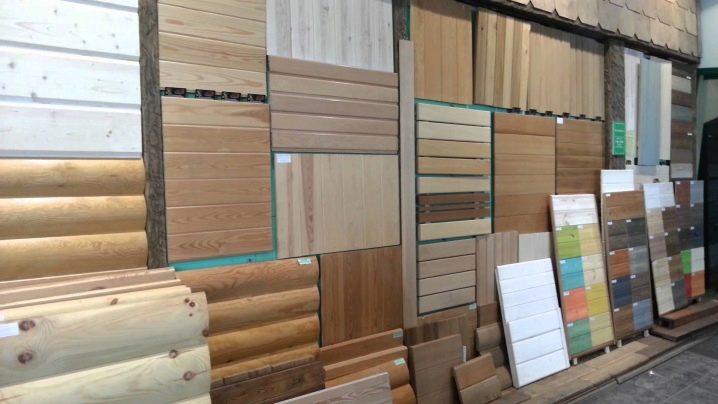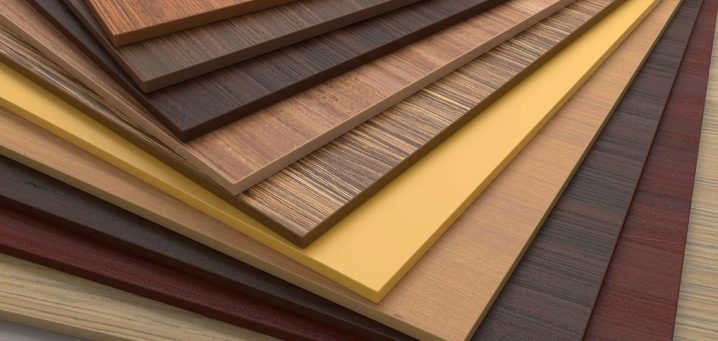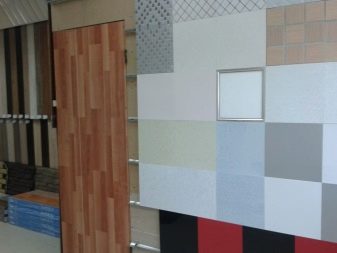Moisture resistant MDF panels: advantages and disadvantages

During the operation of the shower room, it becomes clear that it is a rather complex room. This can also be closely related to the fact that the humidity in the shower is always high, besides, there is a high level of condensation and a large amplitude of temperature fluctuations.
Considering all of the above, we can conclude that it is necessary to choose finishing materials with improved characteristics. Also, the product in question should not only withstand the effects of negative factors, but also be easy to install.


You can stop your choice on ceramic tiles, since it meets all the above characteristics. But she also has one significant drawback - too high a cost. But thanks to modern technologies, there is another option on the market that also meets all the requirements, but at the same time it is also distinguished by an affordable price. This material is moisture resistant MDF panels.

They are classified as materials of the new generation, so they can be a worthy alternative to tiles. They have both advantages and, of course, disadvantages.
Before purchasing them, it is worth examining the positive and negative traits.
Thanks to this, it will be possible to draw the right conclusions, saving yourself money, nerves and time.

Advantages and disadvantages
The main disadvantage of high-quality materials for finishing shower cabins is their high cost. But, as mentioned earlier, a way out was found during the creation of MDF panels. The panels are really effective for bathrooms: they are affordable, strong, durable, practical, comfortable and easy to install.
The raw materials for the manufacture of MDF panels are sawdust and other wood components.
The material is primarily processed in a special way to the formation of fine chips. Then it takes the desired shape by dry pressing under the influence of high temperature and pressure.


It should be noted that the domestic market is characterized by a stable demand for MDF panels.
They have a number of significant advantages:
- ease and simplicity of installation, which is quite possible to carry out with your own hands (removal of old coatings and leveling is not required, installation can be done using improvised means without the use of professional equipment, during operation there is practically no dirt, dust, waste);
- versatility (suitable for finishing not only walls, but also the ceiling);
- durability (with proper use, MDF trim will last more than 10 years);
- strength;
- resistance to moisture;




- antiseptic properties (panels are treated with substances that protect against mold and mildew);
- easy care (you can clean the dirt from the surface with a damp sponge);
- affordable price;
- ease of cutting;
- various options for attachment to the surface are possible;
- are excellent heat insulators;
- the raw materials from which the panels are made are environmentally friendly;
- represented by a fairly wide range.




In addition to all of the above, the finishing material in question can be combined with any other finishing materials. For example, many combine MDF panels with a stone or tile coating - this is one of the most attractive in appearance options. It is also possible to combine different finishes.
And due to the fact that the panels are provided in several sizes, they can be used in shower rooms with different sizes.
The resistance of MDF panels to high humidity allows them to be used also in bathrooms with a large area.



Despite the large number of positive aspects, negative aspects are also characteristic of MDF panels. However, you should not be afraid of this: this applies to all other finishing materials, it is just that each of them has its own disadvantages. The correct approach to the installation and operation of such panels will help to avoid negative manifestations.
The disadvantages of MDF panels are usually:
- low impact resistance;
- it is easy to cause damage to the surface, for example, scratches;
- unreliability in terms of fire safety.

So, MDF panels have high performance, despite the presence of certain drawbacks. But you need to keep them serious, because if they are not approached correctly, they can really cause some problems. At the same time, exaggerating the shortcomings is useless - the correct approach will ensure getting rid of them, moreover, they may not appear at all.
Also, do not trim the workplace with such panels: due to the vulnerability of the surface, they can easily be damaged.
In general, all the indicators of the material do not require separate recommendations.



Varieties of finishing material
The first variety that I would like to consider is the tiled option. The name of the species is associated with their shape - this is the shape of the tiles. But such tiles are made in different sizes (with side lengths from 30 to 98 cm). The advantage of this option is the ability to create an unusual, original and spectacular appearance. By being creative, you can combine different shades or create a special effect by combining textures - all this will only brighten the shower. Tiled MDF panels are also easy to install: glue is used to attach them to the walls.



The next view is represented by slatted MDF panels. As the name implies, the finishing material consists of slats, which can have different lengths (up to 3.8 m), width (no more than 28 cm) and thickness (from 8 to 14 mm). Thanks to this variety, any desires and needs can be satisfied, even with small financial resources.
This type of MDF panels must be fixed on a metal or wooden crate.

And you can fix them using brackets or screws. The most popular panels are in the form of strips when it is required to sheathe small rooms.
There is a variety represented by sheet panels. They are made in the form of rather large elements (1.25 * 2.5 m). This variety is usually used in order to create an interesting interior in a room with a large area. They are distinguished by their ease and speed in installation - it is enough to fix it with glue. Moldings can be used to hide the joints. The structure of the sheet panels can also be different, so it can easily fit into the interior of any style. But it should be said that, in general, such a finishing material is an excellent option for finishing the front surface.


There is also such a variety as laminated panels. They are distinguished from other types by the composition of their surface: a special PVC film is applied to it. The design is also really good: this finishing material can mimic the look of wood, stone or even metal. In addition, in addition to aesthetic characteristics, it has the ability to repel dust and moisture.
You can select a material with a surface sheathed with veneer and having the ability to acquire shades of trees. This type is called veneered panels.
There is also a finishing material in the form of painted panels, which have an incredibly beautiful shine.


Due to a special effective coloring agent, the surfaces are provided with additional protection.
Stopping your choice on one or another waterproof finishing material, you must also remember to purchase the necessary components for it - moldings. They are used for finishing and decorating corners and joints. Moldings are of various types: ceiling, end, starting, connecting and others. The choice of one or another variety is determined by the layout of the room and the chosen decoration method.


Installation rules
Installation of MDF panels is quite simple: no special skills or abilities are required, everything is easy to do by yourself. However, there are several nuances that need to be considered when attaching panels to walls. So, the installation of some varieties is carried out on the crate, making the entire installation process much easier. In addition, the surface of the walls must be flat: in this case, it will be possible to fix the panels without spending a lot of time leveling it. But the presence of flaws will make it necessary to correct them, which will require a primer or plaster. Plasterboard blocks can also be used for alignment, from which you can make a neat partition. As soon as all the preparatory work is completed, the area of the room is measured.




After that, you can fix the MDF panels. To do this, use glue, screws, nails, specialized staples, clips, etc. At the same time, each panel is fixed, starting from its corners. Thanks to this approach, they can be easily removed if desired. As for the lathing, as mentioned earlier, it can be wooden or metal. It is worth choosing this or that material, based on the characteristics of the selected variety.
You can mount them in a horizontal or vertical position, as it is convenient for anyone and as he likes.



It should be borne in mind that a horizontal arrangement will create a visual effect of expanding the area, and a vertical one will make the ceiling higher.
Also, during installation, it is recommended to use insulation as a filler for free space: it additionally insulates the room and additionally protects the surface from negative influences.
In addition, if crate is used when installing MDF panels, it will be possible to supply additional communications, install built-in lamps.
So, I would like to say that MDF wall panels have both pros and cons. However, the ease of installation allows us to conclude in favor of their positive aspects.


For more information on the installation of MDF panels, see the following video.













The comment was sent successfully.